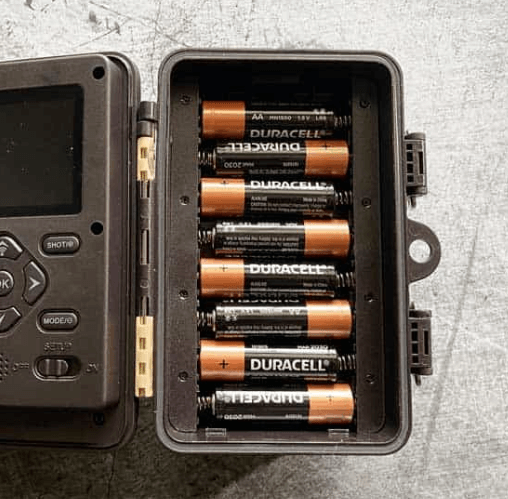Waterproof Housing for Outdoor Cameras
Discover the importance of waterproof housing for outdoor cameras, its key features, use cases, and how it protects devices in harsh environments.
Glossary
Sealing components designed to prevent water, dust, and contaminants from entering electronic devices, ensuring durability and functionality in harsh environments.
A waterproof gasket is a small yet critical component made of elastomeric materials such as rubber, silicone, or specialized polymers like EPDM (ethylene propylene diene monomer). These gaskets are specifically designed to prevent water, dust, and other contaminants from entering electronic devices, ensuring their longevity and functionality.
Waterproof gaskets are typically employed in conjunction with device enclosures to create an airtight and watertight seal. For trail cameras and similar electronics, these gaskets are strategically positioned around sensitive areas such as:
When compressed between two mating surfaces, the gasket effectively blocks external elements, preventing damage to the internal components.
| Material | Key Properties | Common Applications |
|---|---|---|
| Silicone | Heat-resistant, UV-resistant, flexible | Outdoor electronics, trail cameras |
| Neoprene | Chemical and oil resistance, durable | Automotive components, sensors |
| EPDM Rubber | Ozone-resistant, withstands extreme temperatures | Industrial equipment, marine devices |
Waterproof gaskets are indispensable for electronics and devices constantly exposed to outdoor or underwater conditions. They not only protect internal components but also ensure the device operates reliably over extended periods.
Trail cameras are exposed to unpredictable weather conditions, and waterproof gaskets are crucial for their functionality. Key sealing points include:
For instance, in Browning trail cameras, the external power connector gasket effectively seals the opening, protecting the device from moisture when using external power sources.
Marine electronics like depth gauges require robust waterproofing. A combination of silicone gaskets and adhesives create enclosures capable of withstanding temporary immersion, adhering to IP67 standards.
In extreme environments like mining sites, high-temperature-resistant EPDM gaskets seal industrial sensors, ensuring consistent performance despite exposure to dust and water.
Waterproof gaskets play a vital role in achieving IP ratings:
| Maintenance Tip | Purpose |
|---|---|
| Apply Silicone Grease | Enhances sealing and reduces wear |
| Inspect for Damage | Ensures continued waterproofing |
| Replace Damaged Gaskets | Prevents water ingress due to material failure |
Temperature fluctuations can lead to internal condensation, even with proper gaskets. Solution:
UV exposure, chemicals, and extreme conditions can degrade gaskets. Solution:
Waterproof gaskets are produced using advanced methods like:
In marine applications, elastic polymers are overmolded onto rigid casings to create watertight enclosures capable of withstanding high-pressure conditions.
| Sealing Method | Advantages | Disadvantages |
|---|---|---|
| Waterproof Gaskets | Reusable, flexible, and repairable | Requires proper maintenance |
| Adhesive Sealants | Strong bond, suitable for permanent seals | Non-reusable, complicates repairs |
| O-Rings | Effective for round/static seals | Less effective for irregular surfaces |
Waterproof gaskets are vital in protecting trail cameras and other electronics from environmental damage. Their ability to form robust seals while withstanding various environmental stresses makes them indispensable in modern device design.
If you’re looking to extend the life of your trail camera or electronic device, investing in high-quality waterproof gaskets is essential. Explore our range of waterproofing solutions or contact us for expert recommendations today!
Ensure the durability and reliability of your trail cameras and outdoor electronics with high-quality waterproof gaskets.
A waterproof gasket is a sealing component made from materials like silicone or rubber, designed to prevent water, dust, and contaminants from entering electronic devices.
They protect trail cameras by sealing housing areas like battery compartments and lens openings, ensuring reliable operation in harsh weather conditions.
Common materials include silicone, neoprene, and EPDM rubber, chosen for their resistance to water, UV light, and extreme temperatures.
Waterproof gaskets are used in trail cameras, marine electronics, industrial sensors, smartphones, and automotive components to ensure protection against environmental exposure.
Inspect gaskets regularly for wear or damage, use lubrication to reduce friction, and replace aging gaskets to ensure effective sealing.
Discover the importance of waterproof housing for outdoor cameras, its key features, use cases, and how it protects devices in harsh environments.

Understand the purpose, design, and technical details of battery compartments in trail cameras, alongside tips for maintenance and extended power solutions.
Discover the importance of trail camera mounting brackets, their types, uses, and how they enhance wildlife monitoring and surveillance setups.